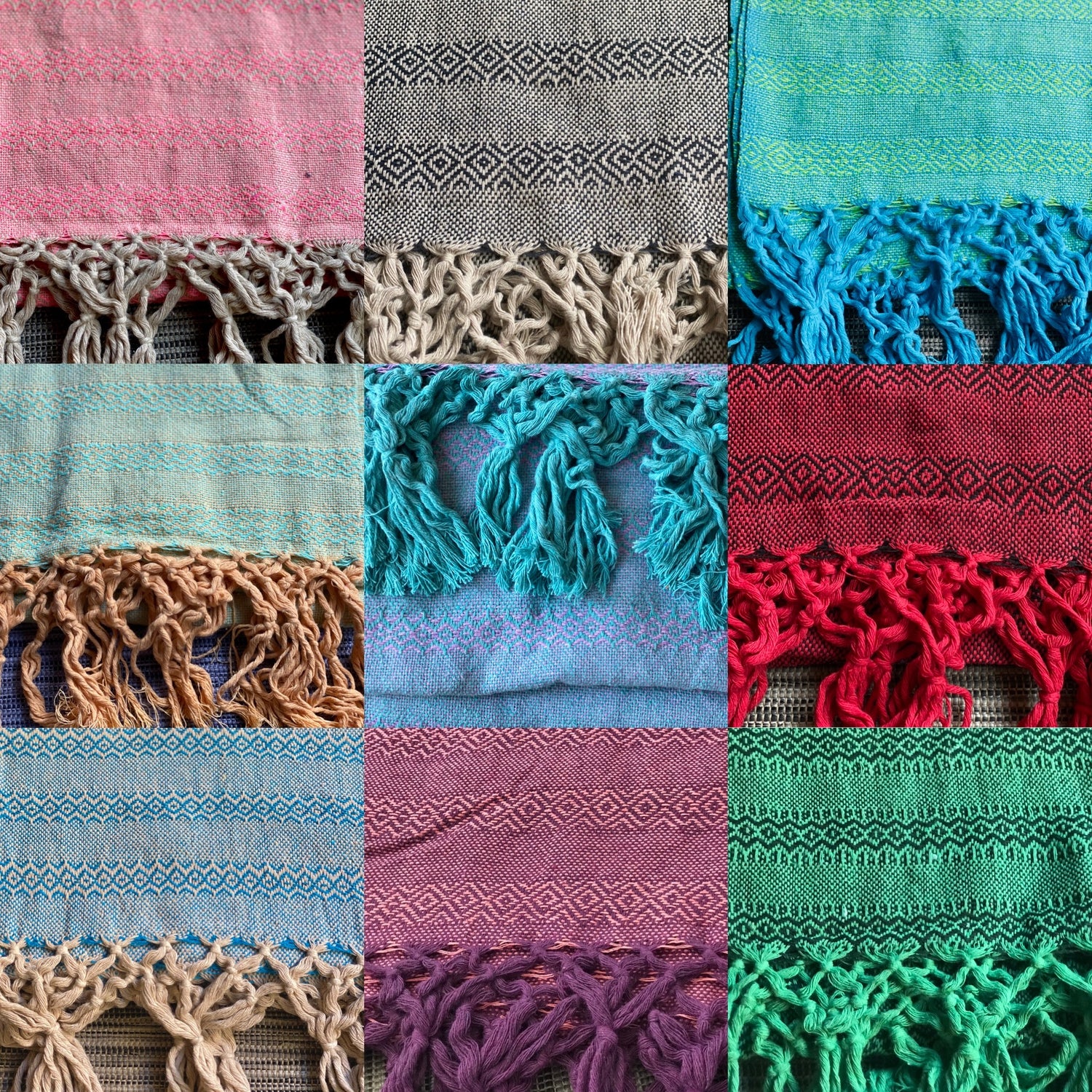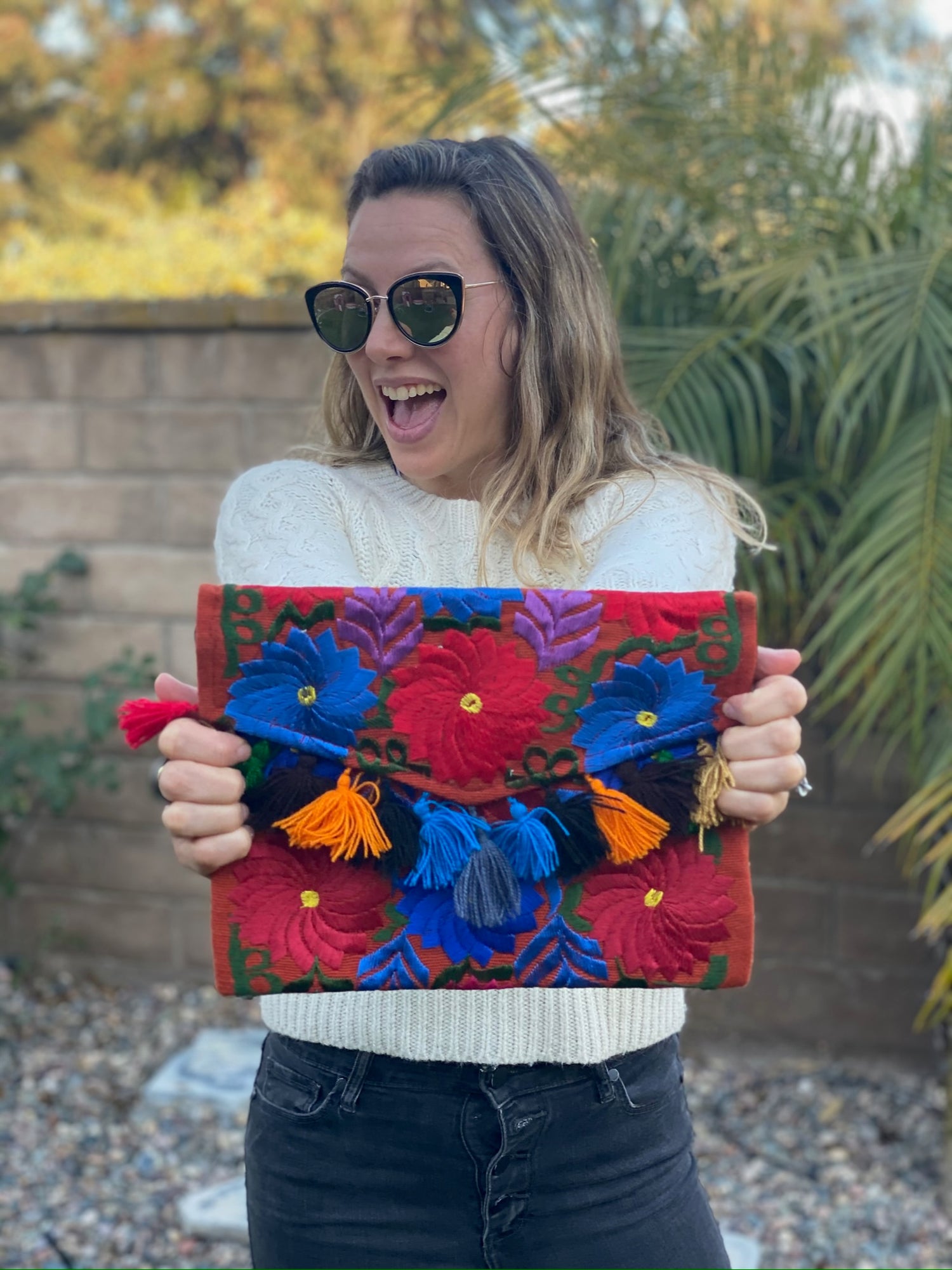The Mexican rebozo is more than just a beautiful garment; it is a vital piece of history and culture that reflects the rich heritage of Mexico. This traditional shawl has roots that trace back to pre-Hispanic times, symbolizing the resilience and creativity of Mexican women.
As you explore its origins, you will discover how the rebozo has evolved from a practical item used in daily life to a significant cultural icon.

Throughout the centuries, the rebozo has played a crucial role in Mexican traditions, showcasing various weaving techniques and vibrant colors that tell stories of community and identity. Today, it continues to be relevant, celebrated for its artistic value and the strong cultural connections it fosters.
As you read on, you’ll gain a deeper understanding of the rebozo's journey and its place in contemporary society.
Key Takeaways
- The rebozo has deep historical roots in Mexican culture.
- It showcases the artistry and traditions of local communities.
- The rebozo remains relevant in modern fashion and cultural identity.
Historical Significance and Evolution

The Mexican rebozo has a rich history that reflects the country's cultural journey. Its evolution illustrates the blending of indigenous traditions with Spanish influence over centuries.
This section explores the rebozo's origins, its transformation through colonization, and its role as a cultural symbol today.
Pre-Colonial Origins and Mesoamerican Roots
The rebozo traces its origins back to pre-colonial Mesoamerica. Indigenous women wove these shawls using materials like cotton. They created items such as ayates and mamatls, which served practical and ceremonial purposes.
Patterns and colors were often influenced by regional traditions and the surrounding environment. These early versions of the rebozo were integral to daily life.
Women used them for carrying children, goods, and even during rituals. The rebozo symbolized not only a piece of clothing but also cultural identity.
Colonial Influence and Ikat Technique
With the arrival of Spanish colonizers, the rebozo evolved significantly. Spanish mantillas influenced its style, adding layers of complexity.
The introduction of the ikat technique further transformed rebozo weaving. This method involved binding threads before dyeing them to create intricate designs.
The blending of indigenous and Spanish styles resulted in unique patterns. Craftsmen developed skills that passed down through generations.
During this colonial period, the rebozo became a fashionable item among both indigenous and Spanish women. The intricate designs reflected a mix of cultures, marking an important point in its evolution.
Post-Independence Cultural Symbolism
After Mexico gained independence, the rebozo emerged as a powerful symbol of national identity. It represented a connection to heritage and tradition.
Artists like Frida Kahlo embraced the rebozo in their works, highlighting its significance.
The rebozo also became a means of expressing femininity and strength. Its use in various ceremonies tied it to important cultural events, such as Mexican Independence Day.
The shawl holds deep meaning for indigenous women, signifying resilience and pride in Mexican culture.
Contemporary Relevance and Cultural Practices

The Mexican rebozo remains significant in today’s society, combining traditional craftsmanship with modern-day applications. It serves not only as a fashion statement but also as a cultural symbol deeply embedded in everyday life.
Artisanal Craftsmanship and Regional Varieties
The artistry behind rebozos involves skilled weavers who use traditional methods passed down through generations. Each region produces its own handwoven rebozos, reflecting unique styles.
- Santa María del Río is famous for its intricate designs.
- Oaxaca and Chiapas offer colorful patterns and textiles that showcase local identities.
Artisans often incorporate local materials and techniques to create durable yet beautiful pieces. These rebozos vary in texture and color, with some weaved using fringe for a decorative edge.
The craftsmanship is celebrated in exhibitions, such as those at the Fashion and Textile Museum, highlighting the cultural significance of each region's style.
Rebozo in Fashion and Modern Usage
In contemporary fashion, the rebozo has evolved into a stylish accessory seen on runways and in daily wear. Mexican fashion designers, like Carmen Rion, blend traditional elements with modern trends, creating unique garments that attract attention.
You can wear a rebozo in various ways, whether as a shawl for warmth or as a statement piece. This versatility allows it to fit seamlessly into both casual and formal outfits.
Many brands are now focused on sustainable fashion, promoting contemporary rebozos that respect traditional practices while appealing to modern consumers.
Symbolism and Use in Ceremonies and Everyday Life
The rebozo holds deep symbolism in Mexican culture. It is often used in important life events, such as childbirth and weddings.
For instance, in some traditions, a rebozo serves as a covering for a bride, symbolizing modesty and respect.
In addition to ceremonial uses, you may find a rebozo in daily practices, such as carrying children or goods. Its application in traditional medicine and indigenous traditional dances also showcases its importance in various cultural expressions.
The rebozo is more than an accessory; it embodies a rich heritage that connects past and present.
Frequently Asked Questions

The Mexican rebozo is an important cultural garment with deep historical roots. Its uses, symbolism, and production techniques reflect the rich tapestry of Mexican life and tradition.
What is the historical significance of the Mexican rebozo?
The rebozo has played a vital role in Mexican history, especially among women. It symbolizes resilience and cultural identity, serving as a link to the traditions of indigenous communities.
How has the rebozo been traditionally used in Mexican culture?
Traditionally, the rebozo has been worn in various ways. It can function as a shawl for warmth, a sunshade, or a carrying tool for babies and goods, showcasing its versatility in daily life.
Can you describe the cultural symbolism attached to the rebozo in Mexico?
The rebozo represents femininity and strength. It is often associated with motherhood and nurturing while also signifying a connection to heritage and community values.
What are the distinct characteristics that define a traditional Mexican rebozo?
A traditional rebozo is typically long, ranging from 6 to 12 feet. It is woven from cotton or silk and features unique patterns and colors, often reflecting regional styles and techniques.
How has the production of rebozos evolved in Mexico over time?
The production methods for rebozos have changed significantly. While traditional hand-weaving remains, modern techniques and materials have been introduced, leading to both preservation and innovation in the craft.
What role does the rebozo play in Mexican rituals and ceremonies?
The rebozo is integral to various Mexican rituals and ceremonies.
It is used in celebrations such as weddings, quinceañeras, and religious events, symbolizing cultural pride and continuity within communities.




